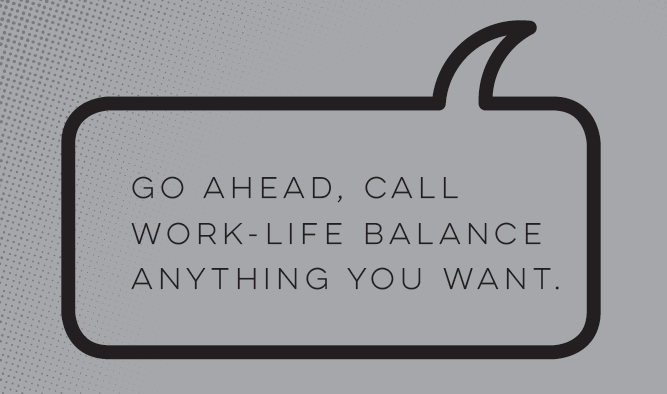It doesn’t matter what we call “work-life balance” because there is no such thing. Call it work-life harmony, integration, flexibility, flow, work-life fill-in-the-blank. What I’ve learned after eight years of talking about this topic with thousands of people in more than 50 countries is that most people share a simple and similar desire to create easy joy and meaningful engagement between the interconnected roles, relationships and responsibilities that make up their lives. And this is what they mean when they talk about work-life balance.
While the desire is similar, there are as many ways as there are people on the planet to describe a balanced life. When it comes to balance, we all have our own idea of what is comfortable, tolerable and acceptable. Our secret power is recognizing and accepting that what we need now — in this very moment — to create balance is different than what we will need in 12 months or 2, 5, 7, or 10 years from now. Once we accept that our definition of balance will change, it then becomes about knowing our needs for creating balance, making choices that support those needs and communicating our needs with the important people in our lives. We are dynamic beings, living in a dynamic world and part of dynamic work environments. What we need today will change and shift, and we have to be willing to redefine what we need again and again.
Work-life balance also has nothing to do with work. It doesn’t matter the type of work we do, our level on the corporate ladder, the hours we put in, or even whether or not we are paid for our work. We all have responsibilities that can be considered work — whether our “title” is corporate VP, director, student, volunteer, or household manager. Moreover, balance has nothing to do with gender, family structure, religion, education, income, or geographic location. Work-life balance is not about any of these things specifically. But it is about the conversations we have — or avoid having — about these things and how we feel about how these things impact our lives.

Most of the issues we attribute to being “out of balance” at work or at home can be tracked to (and resolved with) a conversation — and specifically, an authentic conversation. (You know, the kind where you say what you REALLY mean.) What gets us in trouble and keeps us disengaged are the conversations we are NOT having with our managers, business partners, customers, friends, significant others, children, and — most important — ourselves.
It’s possible that 99 percent of the time the conversations we’re not having are about triggers that cause imbalance in our lives. These triggers often boil down to values and boundaries (or lack of boundaries) that support and honor our values in all our relationships: our relationships with work, people in and out of work, and ourselves.
It’s your choice to define what balance means to you.
It’s your choice to accept there will be times of greater imbalance.
It’s your choice to own and authentically express your yeses and nos.
Some days you’ll make choices that support your definition of balance. Other days your choices will sabotage the balance you seek. The magic is that every single day, it’s your choice to make

Originally published at www.huffingtonpost.com.
Originally published at medium.com


